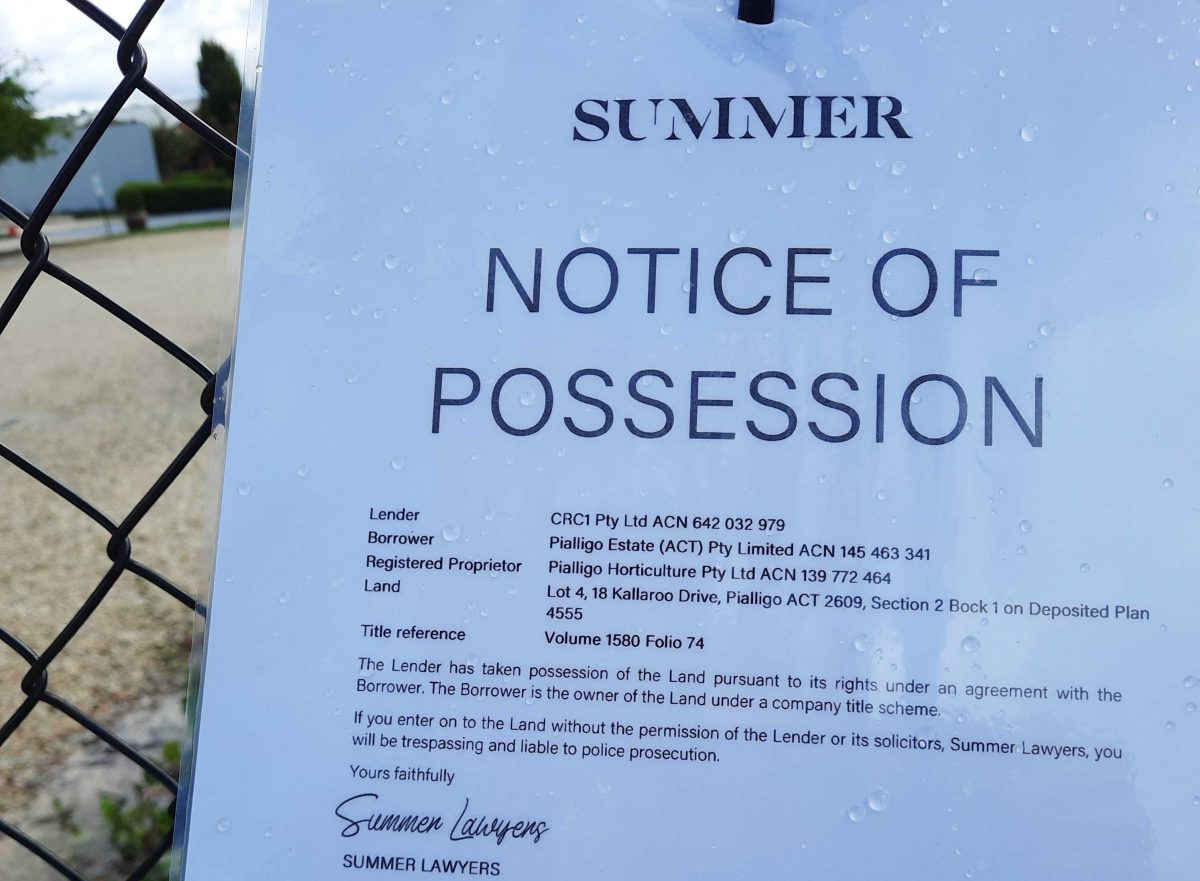
Liquidators said Pialligo Estate began to exhibit indicators of insolvency from as early as 30 June, 2018. Photo: Ian Bushnell.
The failed Pialligo Estate owed its customers, unsecured creditors and suppliers $8.5 million, the statutory report issued by its liquidators revealed today (Saturday, 8 July).
The report on the once-popular Canberra tourism and hospitality business followed a three-month investigation into the company’s affairs.
It said 320 unsecured creditors, including the Australian Taxation Office (ATO) – the largest unsecured creditor with $4.1 million owing – suppliers and customers were owed a total of $8.5 million. It also said the company exhibited indicators of insolvency from as early as 30 June, 2018.
The liquidators blamed the failure on several factors, including Pialligo Estate’s inability to sustain ongoing trade losses or pay its tax debts – both of which were exacerbated by issues such as the COVID-19 pandemic, staffing shortages and fires that damaged the estate’s event and dining facilities in 2016 and 2017.
The Pialligo Estate complex, which opened in 2013, includes a restaurant, outdoor garden, four pavilions for private dining and functions, and an olive grove, vineyard and orchard. It quickly established itself as a foodie and function mecca, and was particularly popular for weddings.
Speculation that the restaurant and its associated businesses at the rural enclave near Canberra Airport were in trouble surfaced in March this year. The restaurant on Kallaroo Road had closed its doors, its website and Facebook page had been taken down and the business was not answering calls.
RSM Australia partners Frank LoPilato and Jonathon Colbran were appointed liquidators of Pialligo Estate Operations Pty Ltd on 8 April.
Mr LoPilato said the report clarified that Pialligo Estate Operations was primarily responsible for running the estate’s farm, tourism and hospitality business but did not own the land on which the business operated.
The liquidators also verified that there was about $883,000 worth of employee entitlements, excluding superannuation, for 119 staff members under the Fair Entitlements Guarantee (FEG) Scheme.
This was a federally funded safety net that enabled eligible employees of a business in liquidation to claim some categories of unpaid employment entitlements. So far, 61 former employees have lodged claims under the scheme.
The liquidators’ findings will go to the Australian Securities and Investments Commission for its determination of likely next steps.


















